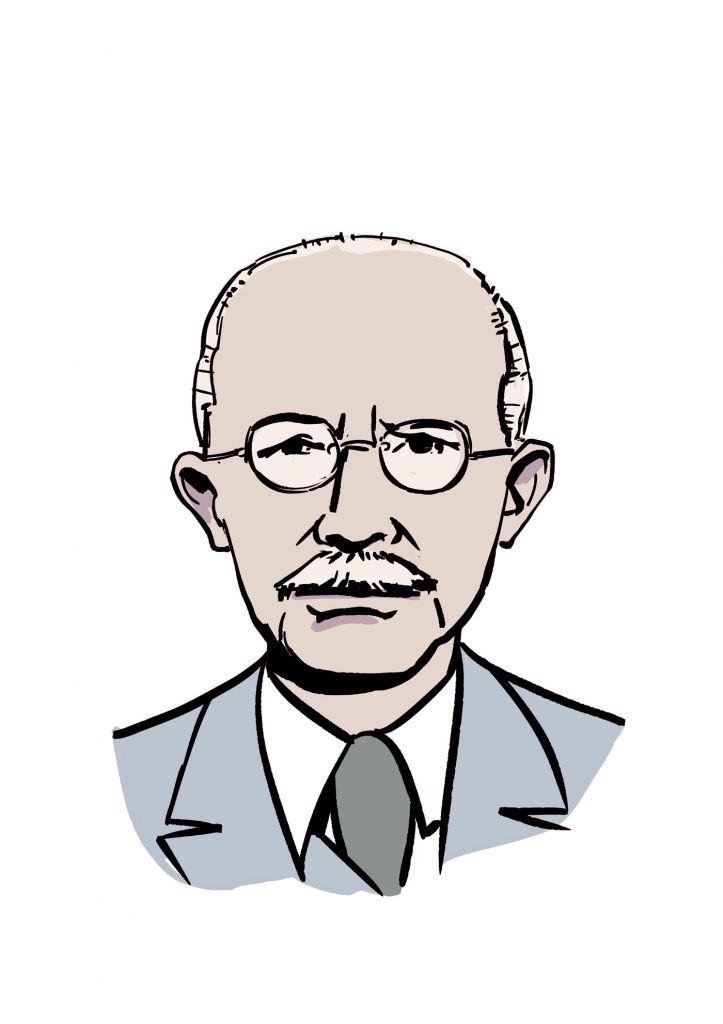Dragotin Gustinčič (1882 – 1974)

Dragotin Gustinčič studied engineering, but his professional recognition was based on his interpretations of the Marxist theory in the early activities of the Yugoslav Communist Party. He was one of the first Yugoslav communists to speak out against Serbian centralist tendencies, in 1923, and supported the federal design of the Yugoslav Communist Party, which later became mainstream. Born and raised on the Adriatic coast, he ran from Italian fascist violence in the period between the two world wars, and was arrested several times. He spent over a year in an investigative prison during the 6 January Dictatorship. He emigrated to Moscow in 1931, took part in the Spanish Civil War as a member of the International Brigades, and upon his return to Moscow, he dedicated his time mostly to studying the national question in the Balkans.
He returned to Yugoslavia in February 1945, expecting to be rewarded with an important political position in the new country, for his work in the communist movement. He was, however, sidelined by the leading communists and excluded from the political sphere. He was placed at the head of the today’s Economics University in Ljubljana. Pushed out of political currents, Gustinčič wrote critical letters to several leading communist leaders in Slovenia. The longest letter was addressed to the chief party ideologue, Edvard Kardelj, in May 1947. Gustinčič asserted that the leadership of the Yugoslav Communist Party had distanced itself from Marxist-Leninist theory and, after pointing out a number of mistakes, asked how it was possible that such mistakes could still be happening in Yugoslavia, after all the analysis of Marx, Engels, Lenin and Stalin.
After his criticisms, Gustinčič was invited to a Party hearing in Belgrade in August 1947, after which he was excluded from the Communist Party. With the deterioration of relations between Yugoslavia and the Soviet Union, Gustinčič was arrested as early as April 1948, because his objections were similar to those expressed by the Cominform and the leading Soviet communists. Since he was already in prison when the Cominform Resolution was published, he did not hear of it until June 1950, when he was transferred to Goli Otok. He was heavily tortured on the prison island, because he was sent to ‘Petar’s Hole’ together with other important communists of the older generation. He was released in 1951, because of a serious illness. During his sentence, he nearly lost his sight, but in order to be released he had to write a letter of repentance to the Central Committee of the Yugoslav Communist Party, which was published on 13 June 1951 in the Slovene Communist Party newsletter, ‘Human Justice’. He did not publish any testimony about his time in Goli Otok, but when he was imprisoned again in 1958, he wrote:
‘I want to make a note that I did not make a statement about the famous Cominform resolution of 1948, because I had already been arrested on 18. 04. 1948., and this resolution, as is known, was first broadcast on the radio on 28. 06. 1948, and I found out about the resolution only two years later.’
